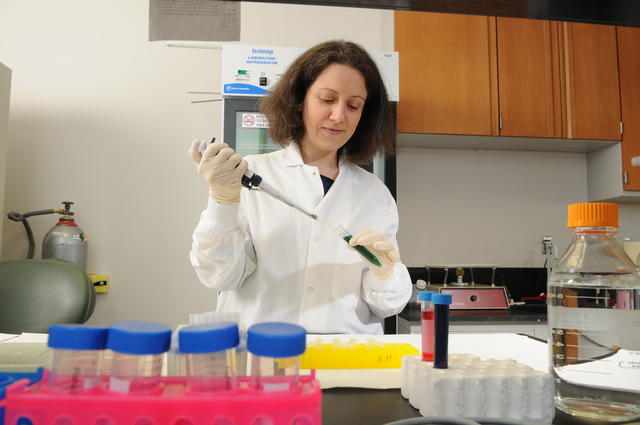Admission CTAs
Tuberculosis Global Game Changer
A killer problem: According to the National Institutes of Health, one-third of the entire world population is infected with tuberculosis (TB). More than 10 million people every year will come down with active symptoms of tuberculosis, and 1.4 million people die from it. Mason scientists have developed a test that aims to help reduce that number rapidly, not only in the United States, but in underdeveloped parts of the world.
Alessandra Luchini, an associate professor in Mason’s College of Science, and Lance Liotta, co-director of the college’s Center for Applied Proteomics and Molecular Medicine, were recently highlighted by Science Translational Medicine for their discovery of a sugar molecule called “LAM” in the urine of TB patients. LAM, which comes from the surface of the TB bacteria, can be measured in the urine of all patients with active tuberculosis regardless of whether they have a simultaneous infection with another pathogen. “The more severe the disease, the higher the sugar concentration in the urine,” said Luchini.
Cutting-edge nanotechnology makes this diagnostic process much less invasive than current testing options, which allows it to be more readily deployed.
The global collaboration includes scientists from Mason, Johns Hopkins University, Peru, and Italy. The team discovered that special copper dye test binds and captures the TB LAM sugar with incredibly high affinity. Luchini describes the technology as “a cage with a chemical bait inside; it works like a lobster trap.”
George Mason University biotechnology partner Ceres Nanosciences will be commercializing the technology, with the aim of making the test available worldwide.
Across the college, Mason faculty and students use their scientific skills to tackle big problems. This research, supported by grants from the National Institutes of Health and from the Bill and Melinda Gates Foundation, served as the basis for the subsequent breakthrough by a group of Mason students to develop a cost-effective, less invasive “dipstick” TB test method. These Mason students will eventually head to Peru to begin testing their device with hundreds of patients for their research study.
“We know the research path forward,” Luchini said. “We have everything in place to do our best to deploy this technology and help people in the world.”

